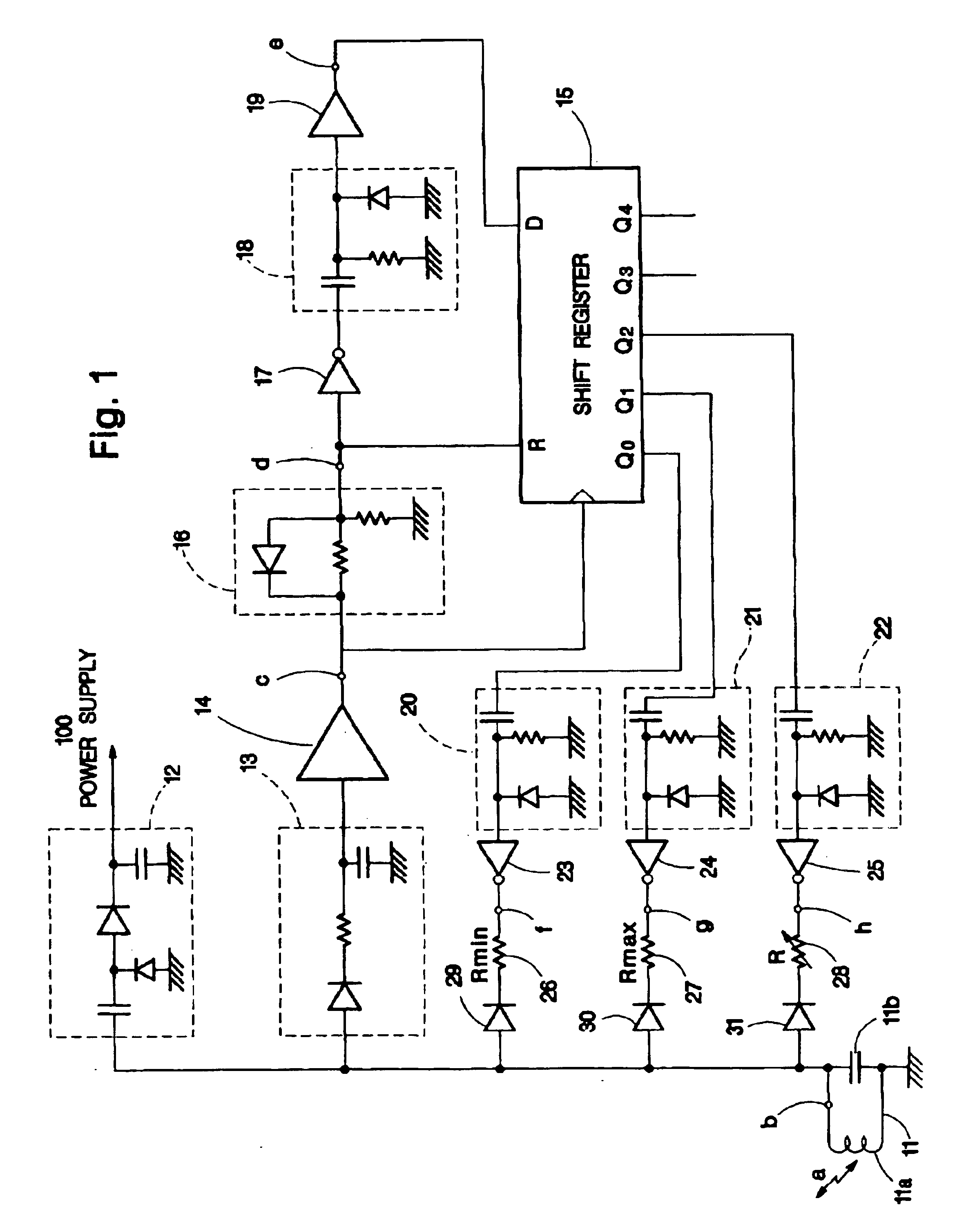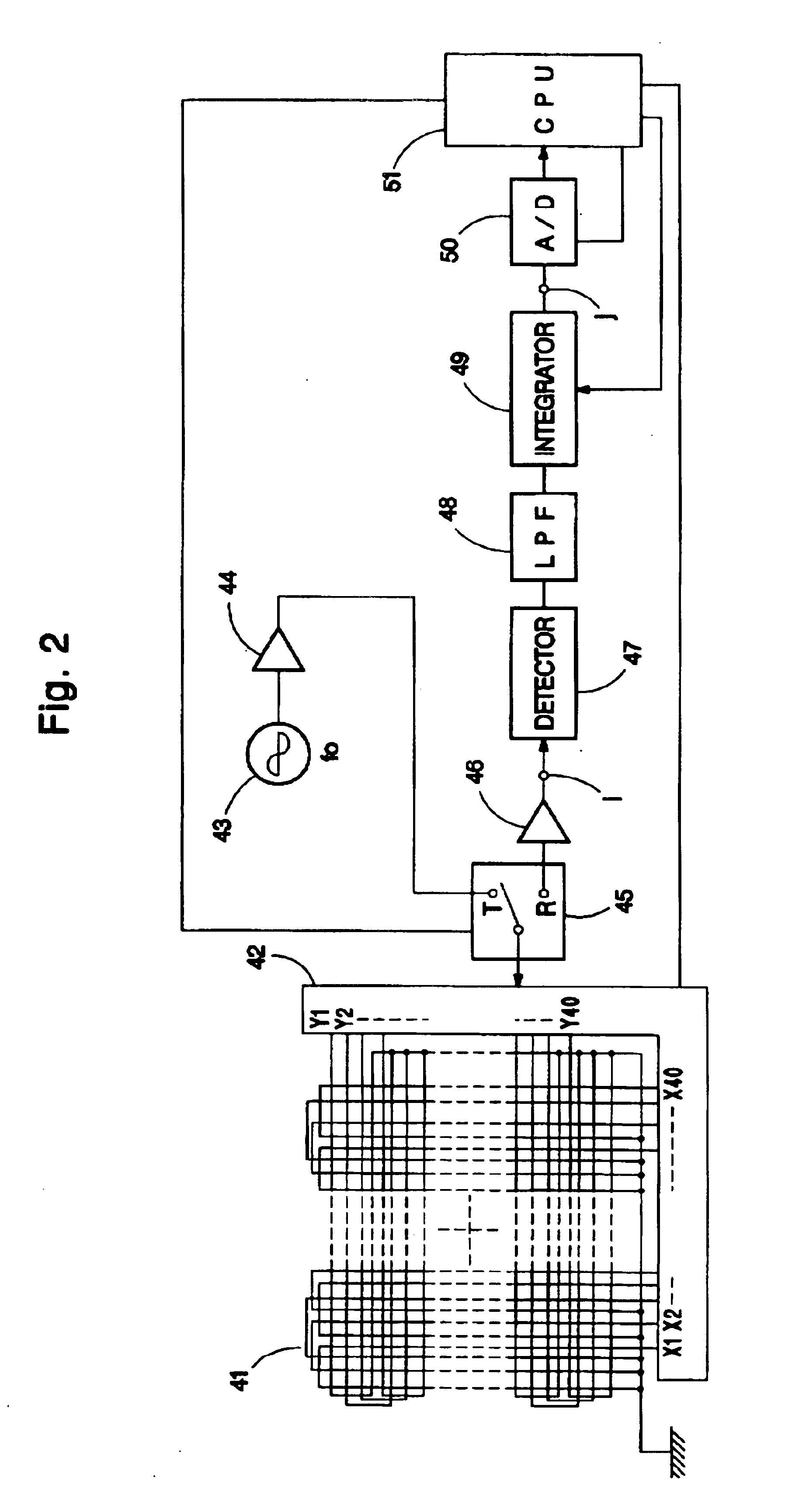Position detector and position indicator therefor
a position indicator and detector technology, applied in the field of position indicators, can solve the problems of inability to obtain the correct continuous quantities, inability to accurately detect writing forces, and decrease in sampling rate, so as to achieve accurate detection, reduce cost, and improve the effect of position indicators
- Summary
- Abstract
- Description
- Claims
- Application Information
AI Technical Summary
Benefits of technology
Problems solved by technology
Method used
Image
Examples
first embodiment
Extended First Embodiment
[0059]Although a variable resistor formed of pressure-sensitive conductive rubber has been used to detect a continuous quantity, the present invention can be implemented by other methods.
[0060]When a load of 0 g is applied to the variable resistor 28, the resistance of the variable resistor 28 becomes substantially maximum. In such a case, the differentiating circuit 21, the inverter 24, the resistor 27, and the diode 30 in the position indicator, and the second transmission / reception during the writing force detecting period can be omitted, and the reception level immediately after the continuous transmission can be used as Vb.
Second Embodiment
Structure of Second Embodiment
[0061]FIG. 5 shows the structure of a position indicator according to a second embodiment of the present invention. Referring to FIG. 5, the same reference numerals are given to components corresponding to those in the first embodiment. The structure shown in FIG. 5 differs from that of t...
second embodiment
Extended Second Embodiment
[0079]Although analog switches are used to connect the capacitors 64 and 65 and the variable capacitor 66 to the resonant circuit 11, the capacitors 64 and 65 and the variable capacitor 66 can be connected to the resonant circuit 11 through diodes instead, as in the first embodiment.
[0080]Although the output value of the integrating amplifier 73 decreases as the electrostatic capacitance of the variable capacitor 66 increases, the synchronous detector 71 can be configured in order that this relationship can be reversed.
Third Embodiment
Structure of Third Embodiment
[0081]FIG. 8 shows the structure of a position indicator according to a third embodiment of the present invention. Referring to FIG. 8, the same reference numerals are given to components corresponding to those in the first embodiment.
[0082]Referring to FIG. 8, the coil 11a and the capacitor 11b form the resonant circuit 11 which resonates at the predetermined frequency fo. The power supply circuit...
third embodiment
Extended Third Embodiment
[0111]In the third embodiment, the resistors each having the resistance RAmin are connected in series with the variable resistors 85 to 87, respectively, and hence the reference value when the dial setting is minimum is commonly used as V1 which is the reference value for detecting the writing force. Alternatively, resistors having different resistances can be employed, and reference values can be computed at different times.
PUM
 Login to View More
Login to View More Abstract
Description
Claims
Application Information
 Login to View More
Login to View More - Generate Ideas
- Intellectual Property
- Life Sciences
- Materials
- Tech Scout
- Unparalleled Data Quality
- Higher Quality Content
- 60% Fewer Hallucinations
Browse by: Latest US Patents, China's latest patents, Technical Efficacy Thesaurus, Application Domain, Technology Topic, Popular Technical Reports.
© 2025 PatSnap. All rights reserved.Legal|Privacy policy|Modern Slavery Act Transparency Statement|Sitemap|About US| Contact US: help@patsnap.com



